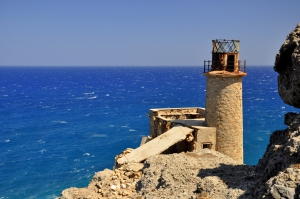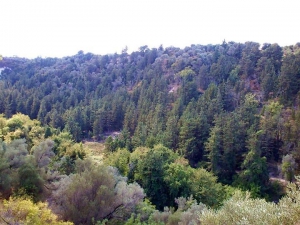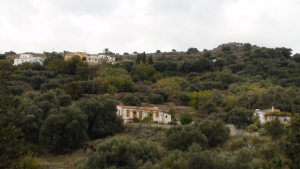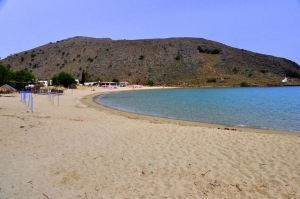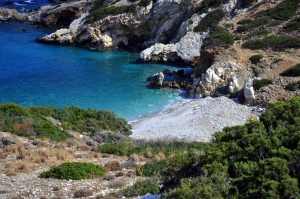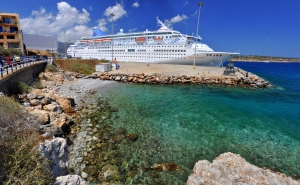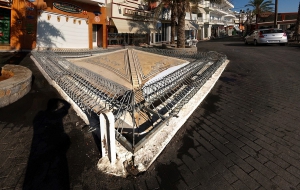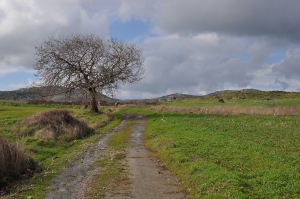The lighthouse of Cape St John or Aforesmenos is located 27km north of Agios Nikolaos, next to the village of Vrouchas and the wind farm of Baboura. The lighthouse can be accessed via a passable dirt track that starts from the wind farm and, then, a short trail that runs along the cliffs (some years ago there was only a trail). The rugged landscape is typical of Crete with bare mountains, rugged coastlines, and too much wind!
Margarites is a village, well known for its marvelous architecture and the traditional pottery. However, in the wider area of the villages of Margarites, Orthe and Eleftherna appear a series of small, parallel gorges. Small streams such as Margaritianos flow towards the north and are tributaries of the Geropotamos River. The gorges are developed in white-yellow marly limestone of the Upper Miocene period (8-10 million years ago) as a result of the uplift of the whole area and the erosion by water.
The route starts from Kissamos and is the first part of the European E4 trail in Crete. After crossing the villages Kato Palekastro, Korfiano and Grigoriana, we arrive at the ancient city of Polirinia and from there we cross the lush green villages Galouva, Lusakies Zahariana and, finally, Sfinari with the beautiful beach.
Kalivaki is the westernmost beach of Georgioupolis bay, located 38km east of Chania and 21km west of Rethymnon, near the exit of Almyros river which has water all year round lies the nice beach of Kalivaki. It is a beautiful sandy beach and water, due to the rivers is very cold.
It is a small and secluded pebbly beach within a rocky bay. It is totally unorganized without any facilities. There is a nice cave in the sea, however the sea streams gather a lot of rubbish at the wider area. The next beach you'll meet is the beach with the abandoned camping site of Gournia. It is very secluded, but rubbish is very often due to the currents.
Next to the port of Agios Nikolaos you’ll find the tiny pebble beach of Akti Themistokleous street, next to the sculpture of Nikos Koundouros named "The Rape of Europe".
The present town of Hersonissos retains the name of the ancient city of Hersonissos or Heronissos. The town existed since the Minoan period, but flourished after the conquest of Crete by the Romans.
Amari valley is formed between the Mountains Kedros and Psiloritis, at an altitude of 400-500m and is 25km long. It is the natural passage from the north to south Rethymno and Messara Plain. For its central location, it was the theater of several historical events, especially during the Ottoman rule.











